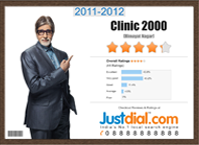
Acne/Pimples Scar Treatment
Effective Acne Scar Treatment in Hyderabad at Clinic 2000
At Clinic 2000, we provide top-notch acne scar treatment in Hyderabad, utilizing the latest advancements in dermatological care. Our specialized treatments, including E Plus Laser Therapy, address various types of acne scars, enhancing skin texture and appearance. Our team of skilled dermatologists customizes treatment plans tailored to your skin type and scar severity, ensuring effective results. Whether dealing with deep pitted scars or hyperpigmentation, Clinic 2000 stands out as the trusted choice for acne scar solutions, helping you regain smooth, flawless skin.
Control your acne! Avoid scarring and some other damage to your skin then Don’t worry, Clinic 2000 provides effective treatment for acne scars that will reduces the scarring on your face.
Call Us Now @ Clinic 2000:
203, IInd Floor, Sai Datta Enclave,
Himayatnagar, Hyderabad – 500 029
Telangana, India.
Phone :+91 9676231891
Email: clinic2000@gmail.com
website: www.clinic-2000.com
FAQs:
What causes acne scars to form on the skin?
Acne scars are typically a result of inflamed blemishes. Swelling causes a break in the follicle wall. The skin attempts to repair these lesions by forming new collagen fibers, which may not appear smooth and flawless like the original skin.
What are the available acne scar treatments at Clinic 2000 in Hyderabad?
Clinic 2000 offers advanced treatments such as E Plus Laser Therapy, chemical peels, and microdermabrasion. These procedures are designed to reduce scar appearance and improve skin tone.
Is laser treatment effective for acne scars?
Yes, laser treatments, especially E Plus Laser, are highly effective for treating acne scars. They stimulate new collagen formation, which helps in smoothing out the skin surface and reducing scar visibility.
How many sessions are required to see results in acne scar treatments?
The number of sessions varies depending on the scar’s severity and individual skin response. Typically, noticeable improvement is seen after 4-6 sessions, scheduled at intervals suggested by our dermatologists.
Are there any side effects of acne scar treatments?
Our treatments are generally safe, with minimal side effects like temporary redness or swelling. These effects usually subside within a few hours or days following the procedure.
Why should I choose Clinic 2000 for acne scar treatment in Hyderabad?
Clinic 2000 is renowned for its experienced dermatologists who employ cutting-edge technologies. Our customized treatment plans ensure effective solutions for every skin type, making us a leading choice for acne scar treatment in Hyderabad.




